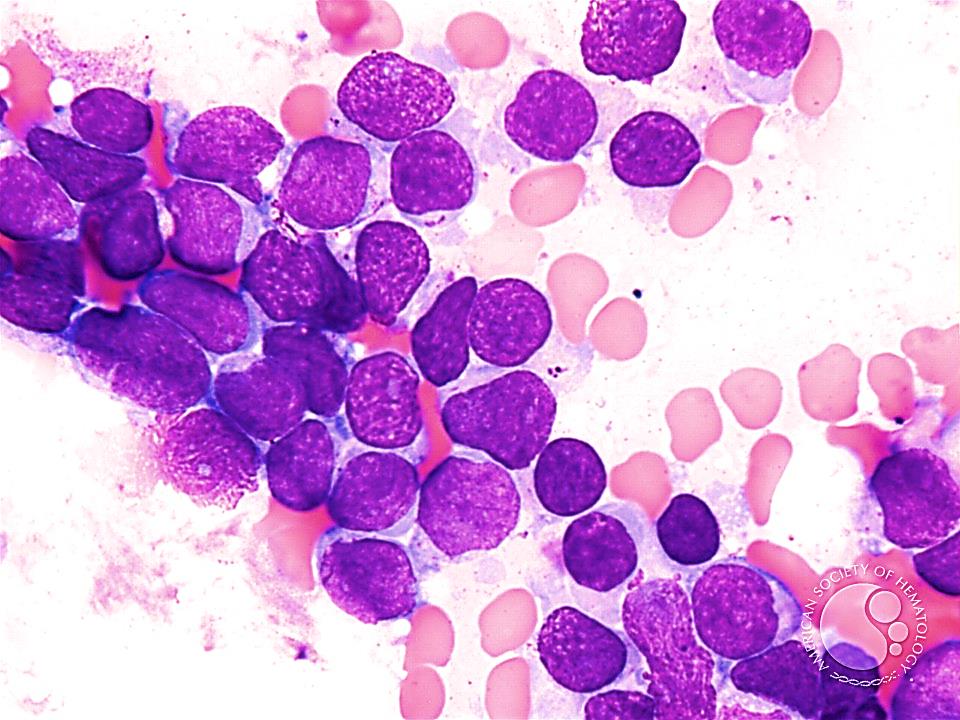Early T-Cell Precursor Lymphoblastic Lymphoma Characterized
By LabMedica International staff writers
Posted on 13 Aug 2021
T-cell lymphoblastic lymphoma (T-LLy) is an aggressive neoplasm of immature T-cell precursors and represents 25% to 30% of childhood non-Hodgkin lymphoma. Posted on 13 Aug 2021
Early T-cell precursor phenotype acute lymphoblastic leukemia (ETP-ALL) is a subtype of T-cell acute lymphoblastic leukemia (T-ALL) with a unique immunophenotype and genetic abnormalities distinct from conventional T-ALL.

Bone marrow aspirate from a patient with Precursor T-cell Acute Lymphoblastic Leukemia (Photo courtesy of Dr. Peter Maslak, MD)
Medical Scientists at the University of Utah School of Medicine (Salt Lake City, UT, USA) assessed the incidence of ETP-LLy among a large cohort of T-LLy patients treated on the Children’s Oncology Group (COG) trial, and compared the copy number profiles of ETP-LLy and non-ETP T-LLy using DNA isolated from archival formalin-fixed, paraffin-embedded (FFPE) samples. The investigators reviewed the immunophenotyping data of 218 T-LLy patients.
Hematoxylin and eosin-stained slides was reviewed on each case to verify at least 80% tumor cells in sections. FFPE tissue from 10 slides per case was scraped into tubes, and DNA was isolated. Genomic microarray hybridization was performed using OncoScan FFPE molecular inversion probe single-nucleotide polymorphism assay (MIP SNP, Affymetrix/ThermoFisher, Santa Clara, CA, USA). Cases were considered ETP if they were CD1a−, CD8−, CD5− or weak, and expressed at least one of the following stem/myeloid markers: CD34, CD13, CD33, CD117. Non-ETP T-LLy cases selected for comparison were required to express CD1a, CD5, and CD8. The team performed single-nucleotide polymorphism array profiling on nine ETP-LLy and 15 non-ETP T-LLy cases.
The scientists reported that compared with non-ETP T-LLy, ETP-LLy showed less frequent deletion of 9p (CKDN2A/B), more frequent deletion of 12p (ETV6) and 1p (RPL22), and more frequent absence of biallelic T-cell receptor γ deletions. Recurrent abnormalities previously described in ETP-ALL such as deletions of 5q and 13q and gain of 6q were not observed in ETP-LLy cases. There were no failures of therapy among the ETP-LLy subtype with a 4-year event-free survival of 100%.
The authors concluded that they had established an incidence of ETP-LLy of 4% and demonstrated that ETP-LLy exhibit distinct features from non-ETP T-LLy at the genomic level including less frequent 9p deletion including CDK2A/B and more frequent 12p deletion including ETV6. They identified RPL22 deletion on 1p as a recurrent finding in ETP-LLy suggesting ribosomal biogenesis dysfunction may play a role in the pathogenesis of some ETP-LLy. Finally, the MIP SNP array may have clinical utility for assessment of T-LLy specimens, especially when only fixed tissue is available. The study was published on July 23, 2021 in the journal Blood Advances.
Related Links:
University of Utah School of Medicine
Affymetrix













